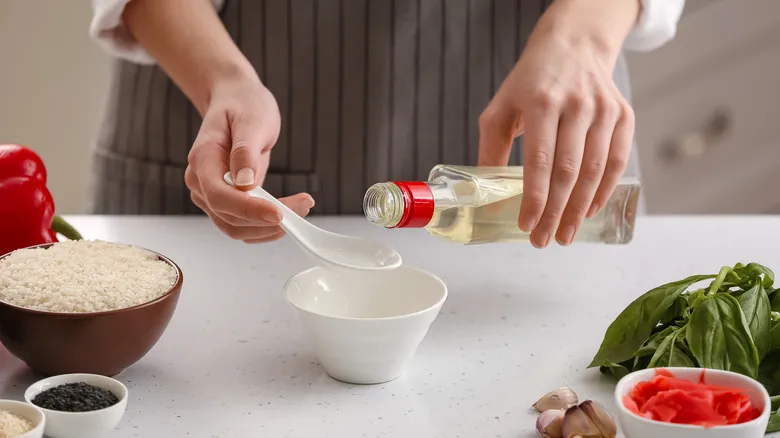Apple cider vinegar should be your go-to substitute

Apple cider vinegar is the most comparable alternative to rice vinegar due to its similar levels of acidity and sweetness. As you might expect, apple cider vinegar is produced by fermenting hard apple cider, and it carries a very subtle apple flavor. This hint is delicate enough not to interfere with the overall taste of your dish.
Typically, rice wine vinegar contains about 4% to 5% acetic acid. In contrast, apple cider vinegar is slightly more acidic, with around 5% to 6% acetic acid. This makes it a much closer substitute for rice vinegar than white vinegar, which can vary significantly, reaching up to 7% acetic acid. While this difference may seem minor, in the realm of acidic ingredients, every percentage point matters.
For cooking, apple cider vinegar and rice vinegar are similar enough that you can substitute them in equal amounts without altering the dish. However, if your recipe specifies seasoned rice vinegar, it's advisable to mix in a pinch of salt and sugar with the apple cider vinegar before using it. This will help mimic the sweet-and-sour flavor profile characteristic of seasoned rice vinegar.
Champagne vinegar is your next best bet

If you lack apple cider vinegar, you can use champagne vinegar as a direct one-to-one replacement for rice vinegar. This type of vinegar is a popular choice for salad dressings due to its well-balanced flavor. Made from fermented Champagne, it shares a similarly mild taste with rice vinegar.
In terms of appearance, champagne vinegar closely resembles rice vinegar. Both are clear and nearly colorless, with just a hint of tan. While champagne vinegar may not be as sweet as rice vinegar or apple cider vinegar, its mildness compensates for this difference. If you find the flavor too tangy, adding a small amount of sugar can help balance it out. Although champagne vinegar is a versatile substitute for rice vinegar, it pairs particularly well with seafood dishes.
Sherry vinegar can work, depending on how much it's aged

Another vinegar option you can use in place of rice vinegar is sherry vinegar. This vinegar is produced from fermented sherry, a fortified wine from Spain that is akin to Port and Madeira. Like champagne vinegar and rice vinegar, sherry vinegar is commonly used in salad dressings and shares a milder tang compared to many other vinegar varieties.
The flavor profile of sherry vinegar is more diverse than that of most other vinegars, as it varies based on the grape varieties used and the aging process. Some sherry vinegars can be aged for up to 10 years, which can make them quite pricey. However, the more affordable options serve as excellent substitutes for rice vinegar due to their similarly gentle acidity. In contrast, heavily aged sherry vinegars may be too robust to effectively replace rice vinegar.
Lemon juice will work in certain scenarios
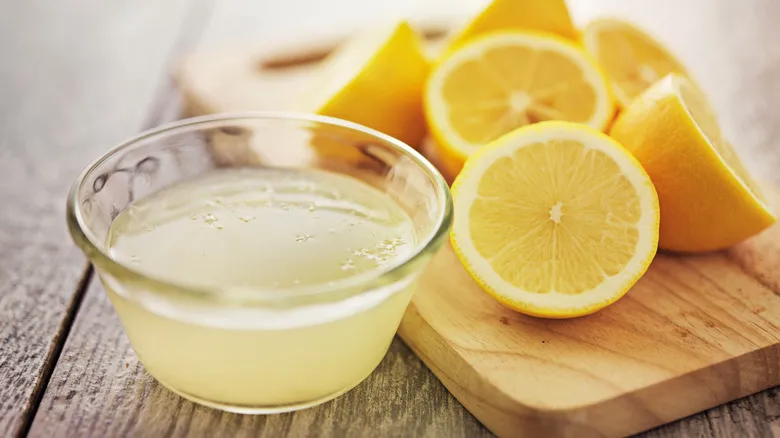
You don't have to replace rice vinegar with another type of vinegar. There are alternative acidic ingredients you can use, such as lemon juice. However, this substitution won't follow a simple one-to-one ratio like other vinegars. To make this switch, you'll need to take the amount of rice vinegar specified in your recipe and double it. In other words, use a two-to-one ratio of lemon juice to vinegar. Depending on how much vinegar your recipe requires, this ratio may result in more liquid than you desire.
The main challenge with using lemon juice instead of rice vinegar is that, while it can offer a similar acidity level, lemon juice has a unique, fruity taste and lacks the sweetness found in rice vinegar. Therefore, lemon juice is only suitable as a substitute for rice vinegar in specific contexts. It works well in marinades or salad dressings, but it wouldn't be appropriate for sushi rice, as the flavor would be off.
If you only have white vinegar, add some sugar and water

What should you do if the only vinegar available in your home is white vinegar? No need to fret; you can still make it work with a little culinary creativity. As mentioned earlier, white vinegar is generally more acidic than rice vinegar and lacks additional flavor since it is derived from neutral grain alcohol.
It's important to specify that we're referring to distilled white vinegar, which is likely what you have in your kitchen. Avoid using basic white vinegar, as it has a harsh 25% acidity and is intended solely for cleaning purposes.
To use distilled white vinegar as a substitute for rice wine vinegar, you'll need to dilute it with some water and add a touch of sugar for sweetness. You don’t need much—about a tablespoon or two of water and a teaspoon of plain white sugar for every cup of white vinegar should suffice. However, it's best to adjust according to your taste. Start by adding just a splash of water and a small pinch of sugar, then taste and modify as needed.
Recommended

Make A S'mores PB&J For An Ooey Gooey Upgrade To Your Sandwich
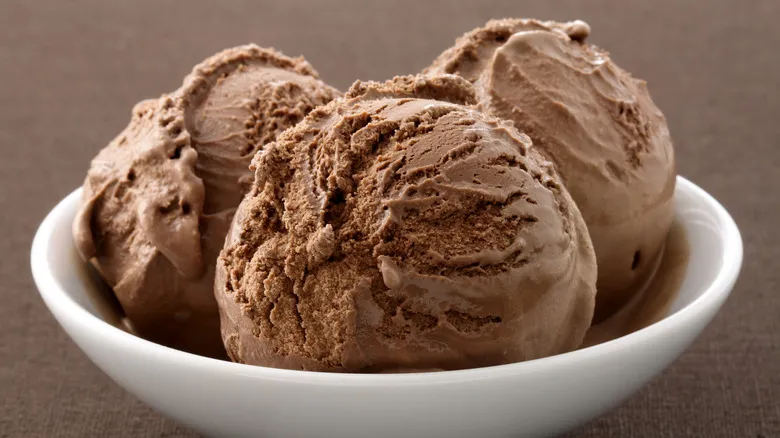
Transform Your Chocolate Ice Cream With One Seriously Bold Topping
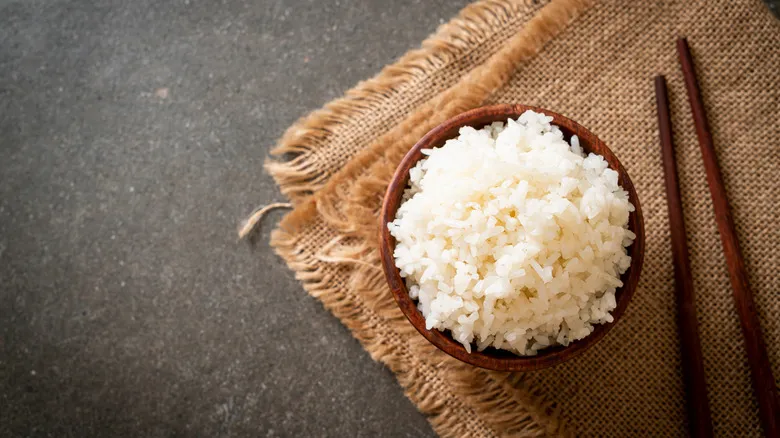
The Mistakes Keeping You From Perfect Rice
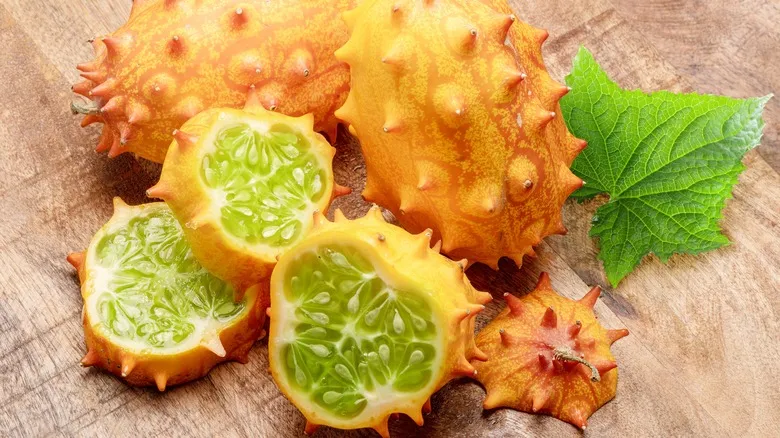
What Does A Kiwano Melon Taste Like And Can You Eat The Skin?
Next up

